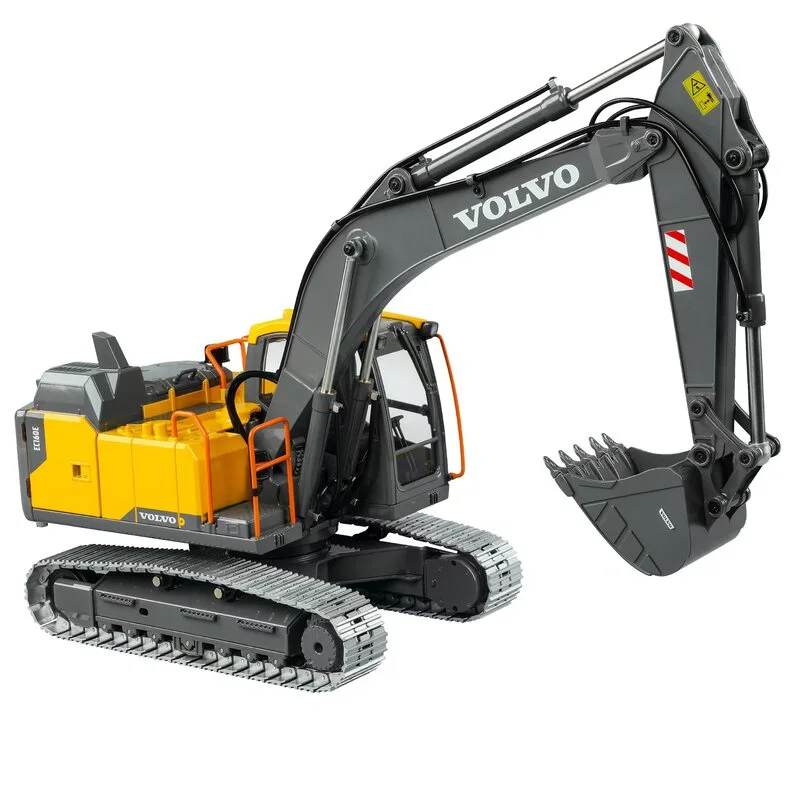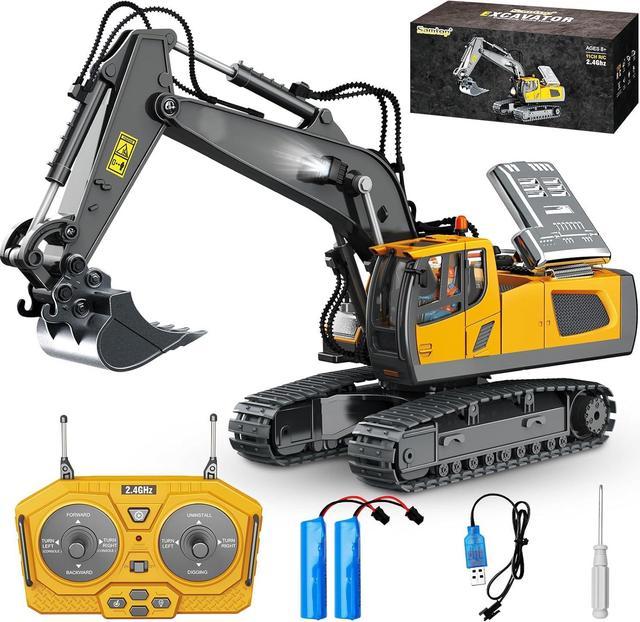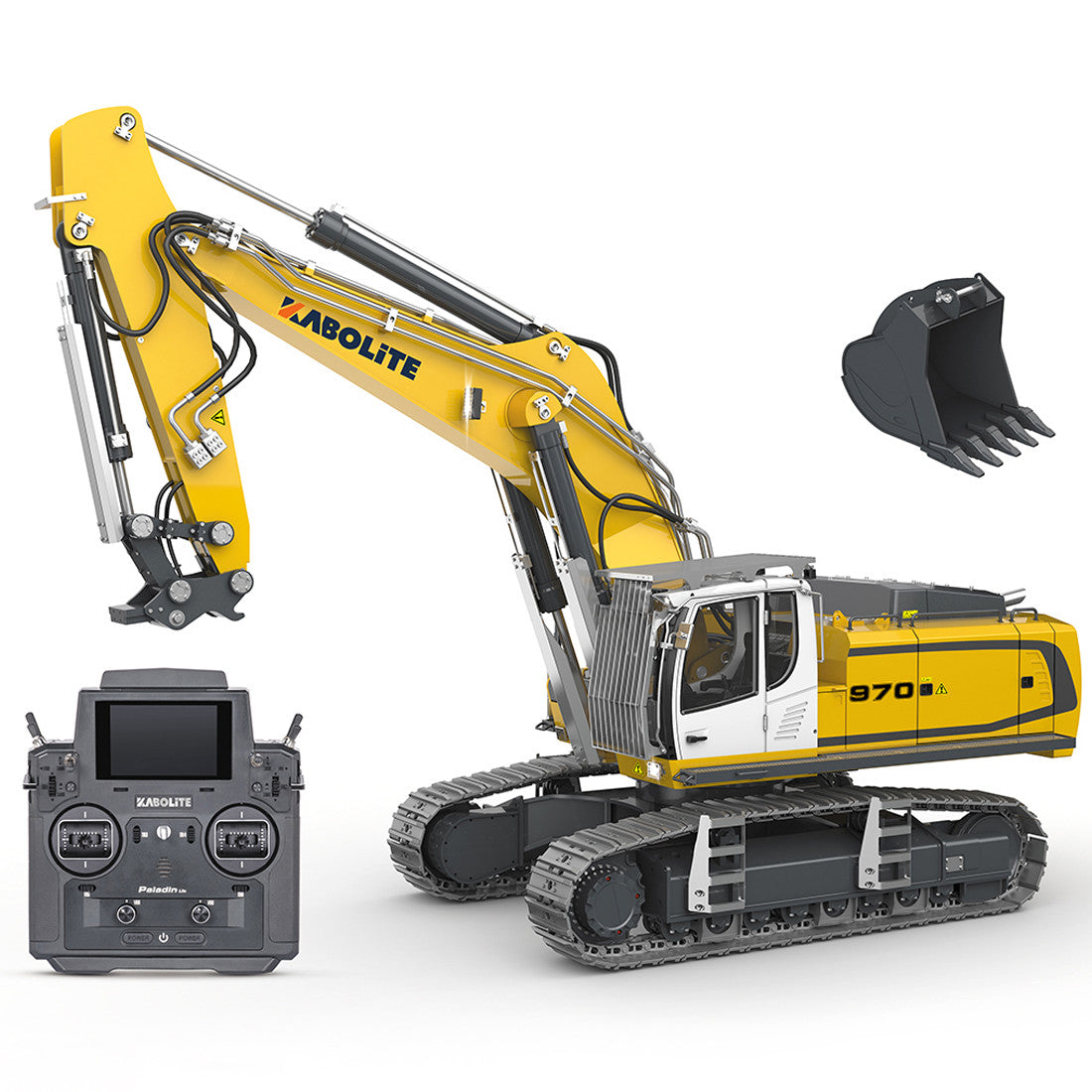The Essential Attributes of Excavator That Make It a Must-Have Tool
Excavators are crucial in the construction and landscaping markets. Their flexible attachments permit a variety of jobs, from excavating to demolition. Furthermore, they boast premium excavating depth and reach, powered by robust engines. Operator comfort and compact layouts boost use in different environments. What genuinely establishes excavators apart are their advanced hydraulic systems and sturdiness. Recognizing these functions can clear up why they are taken into consideration essential tools on any job site.
Versatile Accessories for Boosted Performance
Excavators are effective equipments on their own, the addition of functional attachments substantially improves their performance. These accessories change a basic excavator into a multi-purpose tool, ideal for a variety of tasks. Buckets, as an example, come in different shapes and sizes, enabling operators to dig, scoop, and move products effectively. Hydraulic thumbs can be added for improved gripping and handling of large items, such as logs or rocks.Furthermore, specialized accessories like breakers and augers enable exploration and demolition work, expanding the excavator's energy on construction sites. remote control excavator. Grapples are an additional option, perfect for moving and arranging particles. This adaptability not just enhances performance but likewise minimizes the demand for several equipments, conserving time and costs. By furnishing excavators with the best attachments, drivers can tackle diverse projects, making them important in the construction industry
Superior Digging Deepness and Reach
Excavators are developed with exceptional excavating deepness and reach, permitting them to navigate in tight spaces and accessibility hard-to-reach areas. This ability is essential for different building and excavation projects, where standard equipment may fall brief. With flexible boom arms and extendable tracks, excavators can quickly browse irregular terrain while preserving stability.The excavating depth can differ considerably among designs, commonly varying from 10 to 25 feet, relying on the design and purpose. This function enables drivers to dig deep into structures, trenches, and various other deep structures efficiently. Furthermore, the reach of an excavator enables for precise excavating and material handling without rearranging the machine frequently, saving time and labor costs.Ultimately, the exceptional digging depth and reach of excavators make them essential for specialists seeking to complete intricate tasks with accuracy and performance. Their adaptability improves performance on job sites, showcasing them as a crucial device in modern-day building and construction.
Powerful Engine Performance

When it involves performance and performance on building and construction websites, powerful engine efficiency plays a crucial duty in the abilities of an excavator. A durable engine creates substantial horsepower, allowing the machine to take on durable jobs effortlessly - remote control excavator. This toughness converts into faster cycle times, making it possible for operators to full jobs a lot more quickly.Additionally, powerful engines provide the necessary torque to take care of tough surfaces and differed lots, guaranteeing that the excavator can do effectively under different problems. Whether it is lifting, digging, or relocating products, the engine's efficiency directly influences the overall functional performance of the machine.Furthermore, advancements in engine innovation have caused boosted fuel performance, reducing operational costs while keeping power output. Eventually, the engine's efficiency offers as the backbone of an excavator, verifying its standing as a crucial device in the construction market
Advanced Hydraulic Systems

Improved Lifting Capability
A considerable improvement in raising capability can be associated to advanced hydraulic systems located in modern-day excavators. These systems use high-pressure fluid to generate better pressure, permitting drivers to lift larger lots easily. The design behind these hydraulics guarantees peak efficiency, giving a remarkable power-to-weight proportion that enhances general effectiveness. Consequently, excavators can tackle demanding jobs, such as raising large materials or equipment, without jeopardizing security. Furthermore, the robust design of hydraulic components adds to boosted durability and reliability, making them ideal for different construction settings. This improved training ability not just lowers the moment required for projects but likewise decreases the requirement for added equipment, verifying crucial for both performance and cost-effectiveness in the building and construction sector.
Improved Precision Control
Although traditional excavators often had problem with accuracy, contemporary hydraulic systems have actually changed control devices, enabling drivers to perform jobs with amazing precision. These advanced systems utilize symmetrical control valves that permit smoother and a lot more responsive motions, considerably decreasing the margin for error. Operators can now carefully tune the excavator's activities, making it simpler to browse tight areas and deal with delicate products. Improved responses systems further inform drivers of real-time efficiency, ensuring optimal control in between the equipment and driver. This boosted precision not just boosts performance but additionally enhances safety on work websites, decreasing the danger of mishaps. Therefore, modern-day excavators outfitted with innovative hydraulic systems are indispensable tools for construction and excavation projects needing precise accuracy.
Driver Convenience and Visibility
Operator convenience and exposure are critical elements in the style of modern-day excavators (remote control excavator). Attributes such as ergonomic seat layout, boosted presence choices, and reliable control layouts greatly improve the operator's experience and productivity. Focusing on these elements warranties that drivers can function properly and safely in various problems
Ergonomic Seat Layout
Convenience and visibility are paramount in excavator design, with the ergonomic seat playing a crucial function in enhancing the operator's experience. An ergonomic seat is crafted to sustain the operator's body, lowering fatigue during long hours of procedure. Adjustable attributes, such as seat height, back-rest angle, and back assistance, satisfy private preferences and promote excellent pose. These modifications improve comfort and make it possible for the operator to maintain concentrate on tasks without pain. In addition, a well-designed seat can give better lateral support, enabling smoother handling when the excavator is in operation. This thoughtful design not just improves efficiency yet additionally adds to overall safety and security, guaranteeing that operators can perform their tasks effectively and effectively.
Boosted Visibility Features
The style of an excavator expands beyond simply the seat, with boosted exposure attributes playing a significant duty in operator convenience and general safety. Big windows and strategically positioned mirrors offer drivers with a clear sight of their environments, reducing dead spots. This design consideration enables better spatial awareness, which is necessary in hectic work atmospheres. On top of that, numerous excavators incorporate rearview electronic cameras and advanced surveillance systems that assist operators in steering tight areas. The assimilation of these presence features not only advertises security but likewise reduces driver tiredness by enabling simpler monitoring of workspace. Inevitably, boosted visibility adds to much more effective procedures and assists guarantee that excavators can execute their tasks effectively and securely.
Control Format Effectiveness
While maneuvering complex job websites, an efficient control format greatly enhances both operator convenience and exposure. A well-designed control configuration guarantees that operators can access important features with very little effort, reducing exhaustion during lengthy hours. Ergonomic joystick placements and intuitive switch plans permit seamless procedure, allowing drivers to keep emphasis on the task at hand. In addition, clear presence of both the workplace and the control board is critical for safety and security and accuracy. Modern excavators typically incorporate adjustable seats and control setups to accommodate numerous operator choices, additionally boosting comfort. Inevitably, an attentively developed control design not just boosts performance however additionally cultivates a much safer working environment by allowing drivers to respond swiftly to altering problems.
Compact Style for Urban Environments
As urban building and construction sites often face area restrictions, a portable layout becomes crucial for excavators operating in these environments. These devices are engineered to navigate limited rooms, permitting effective ability to move in jampacked task websites. A lowered footprint enables them to work very closely to existing structures, lessening disruption and optimizing productivity.The compact layout commonly consists of shorter tracks and a tighter turning span, facilitating procedure in slim this website alleys and confined areas. In addition, lightweight materials contribute to alleviate of transport, making it simpler to move the excavator from one place to one more within the city landscape.Additionally, numerous small excavators are furnished with attributes such as flexible attachments and extendable arms, boosting their performance while preserving a small size. This versatility permits operators to tackle a variety of jobs, from excavating to demolition, all while fitting seamlessly into the restraints of city settings.

Sturdiness and Upkeep Considerations
Resilience stands as an essential aspect in the efficiency and longevity of excavators, especially popular metropolitan environments. These equipments undergo extensive conditions, consisting of varying soil kinds, severe temperature levels, and high-frequency use. Top notch materials and robust building are necessary for making sure that excavators can withstand these challenges without compromising functionality.Regular maintenance is just as crucial in maintaining toughness. Arranged examinations, timely oil adjustments, and the substitute of worn elements contribute substantially to an excavator's life expectancy. Operators needs to also pay focus to hydraulic systems, tracks, and undercarriages, as these parts commonly bear the force of wear and tear.Investing in sturdy excavators with extensive upkeep plans boosts dependability and lessens downtime, eventually leading to boosted productivity on building and construction websites. Recognizing the interplay in between sturdiness and upkeep is essential for anyone thinking about the acquisition of an excavator for urban jobs.
Frequently Asked Inquiries
How Do Excavators Compare to Various Other Building And Construction Devices?
Excavators stick out among construction devices because of their flexibility, allowing tasks such as excavating, training, and grading. Compared to others, their hydraulic abilities offer greater performance and power, making them important on different task sites.
What Security Includes Are Consisted Of in Modern Excavators?
Modern excavators integrate different safety and security features, including rollover protection systems, alarm systems, and progressed presence improvements. These aspects interact to reduce dangers, guaranteeing operator safety while boosting performance on building and construction websites and other requiring settings.

Can Excavators Be Used in Wintertime Issues?
Excavators can without a doubt be made use of in winter season problems, given they are geared up with appropriate winter season add-ons and precautions are taken. Proper maintenance and modifications enhance their performance, making sure efficient procedure in spite of difficult climate circumstances.
What Is the Ordinary Life-span of an Excavator?
The typical life-span of an excavator commonly the original source varies from 7,000 to 10,000 hours of operation. This period can substantially rely on maintenance practices, operating conditions, and the certain design's sturdiness and design attributes.
How Do I Choose the Right Excavator Dimension for My Job?
Choosing the best excavator size involves examining job extent, website problems, and product kinds. Take into consideration aspects like reach, deepness demands, and weight ability to guarantee maximum performance and safety throughout operation. Dimension matters substantially in job success. Additionally, the reach of an excavator enables for precise excavating and material handling without rearranging the maker regularly, conserving time and labor costs.Ultimately, the exceptional excavating depth and reach of excavators make them vital for specialists seeking to finish complex tasks with accuracy and performance. Comfort and presence are paramount in excavator layout, with the ergonomic seat playing a crucial role in boosting the driver's experience. The style of an excavator extends past just the seat, with improved presence functions playing a substantial function in driver convenience and overall safety and security. Modern excavators usually integrate flexible seats and control setups to fit numerous driver choices, additionally improving convenience. Lightweight products contribute to ease of transport, making it less complex to relocate the excavator from one area to one more within the urban landscape.Additionally, lots of small excavators are outfitted with features such as functional add-ons and extendable arms, boosting their functionality while pop over here keeping a tiny dimension.